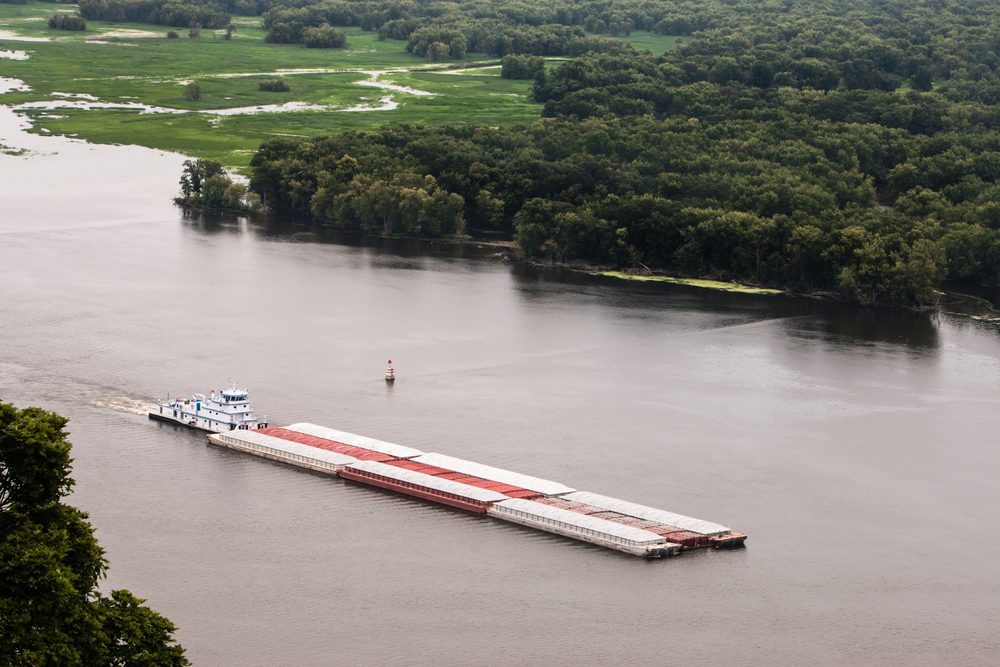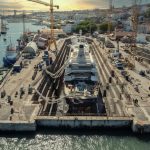The U.S. Maritime Administration has announced a new Marine Highway route and projects as part of the America’s Marine Highway Program.
Today’s announcement includes one new Marine Highway Route, two new Marine Highway Projects, and one Project Designation Extension, set to benefit supply chains in the states of Illinois, Michigan, Wisconsin, Alaska, Hawaii, Washington, California, and Oregon.
The new route designation includes the Kaskaskia River, the second-longest river in Illinois, connecting bulk commodity terminals with the Mississippi River—a distance of more than 300 miles. The Kaskaskia River has been predominately used to ship coal, scrubber stone, slag, grain, and scrap metal since it was established as a navigable waterway. However, the river is also used to ship some 40,000-50,000 tons of unitized coil steel, with a new tenant expected to ship up to 1.2 million tons of coiled steel for processing and other uses once it constructs its processing plant, according to MARAD.
MARAD’s announcement also included two project designations, including the Lake Michigan M-90 Marine Highway Shortcut, supporting an existing passenger and freight vehicle ferry service across Lake Michigan between Ludington, Michigan, and Manitowoc, Wisconsin; and the Northwest Connect, serving the M-5 Marine Highway Route transporting containerized freight to and from Alaska, Hawaii, and Washington.
The project designation extension was awarded to the M-5 Coastal Connector, which received its America’s Marine Highway Project Designation in 2021. The original designation was for the planned service to transport goods on barges between Bellingham, Washington, Southern Oregon, and San Diego, California, but the Port of San Diego requested an extension to the project designation to Oregon’s Port of Umpqua, encouraging the loading lumber for discharge in San Diego and receiving empty containers for use by shippers in Oregon.
“Investments in the America’s Marine Highway Program help us move more goods more quickly and more efficiently to the American people, supporting our supply chains even while they continue to come under pressure from pandemic-driven disruptions,” said U.S. Secretary of Transportation Pete Buttigieg. “Today’s announcements are an important step in the Administration’s Port Action Plan to strengthen our supply chains, modernize port operations, and combat inflation.”
The America’s Marine Highway Program (AMHP) supports the increased use of the nation’s navigable waterways to relieve landside congestion, provide new and efficient transportation options, and increase the productivity of the surface transportation system.
Since its inception in 2014, the AMHP has designated 54 marine highway projects, while Secretaries of Transportation have designated a total of 29 Marine Highway Routes since 2010.
A Marine Highway Route is a navigable waterway, capable of transporting freight, located in the United States or its territories, where as a Marine Highway Project is a planned service, or expansion of an existing service, on a designated Marine Highway Route.
In March, the Department of Transportation announced the availability of nearly $25 million in grant funding—the largest single appropriation of funding in the program’s history—through the Bipartisan Infrastructure Law for the AMHP.
“Put simply, President Biden is leading the largest-ever federal investment in modernizing our country’s ports—and our domestic coastwise services—and improving both our supply chains and the lives of Americans who depend on them,” said Acting Maritime Administrator Lucinda Lessley. “This is truly an extraordinary moment.”
Source: gCaptain





